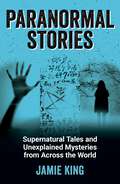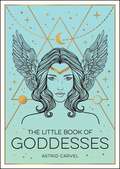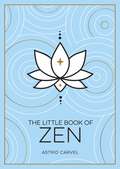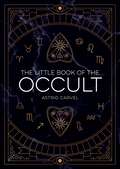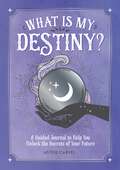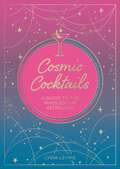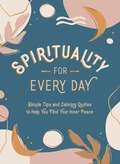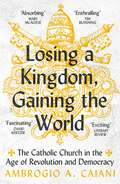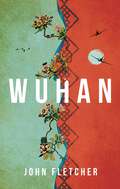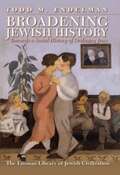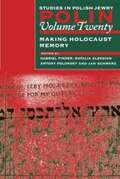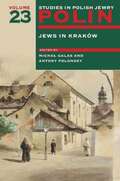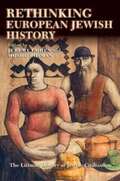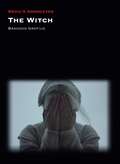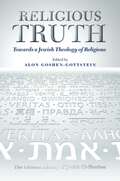- Table View
- List View
Paranormal Stories: Supernatural Tales and Unexplained Mysteries from Across the World
by Jamie KingStep into the unknownTales of the paranormal have seduced us and spooked us for centuries, passed around from person to person and frequently retold and reimagined in books, films and TV. Whether they’re based on real events or they’re simply urban legends which have taken on a life of their own, the strange happenings, unexplained events and unsolved mysteries in this book will take you on a frightening journey to the outer limits of plausibility, and dare you to believe the unbelievable.Ranging from the mysterious to the macabre, the stories in this book span a broad range of supernatural subjects including ghosts, spirits and the undead, witchcraft and occultism, extraterrestrial life, mythical creatures, and much more.Whether you’re a believer or a sceptic, a paranormal junkie or an interested observer, let these stories spark your imagination, capture your curiosity and perhaps even send a shiver down your spine.
The Little Book of Goddesses: An Empowering Introduction to Glorious Goddesses
by Astrid CarvelEmbrace the power of the divine in this beginner’s guide to some of mythology’s fiercest females and most legendary ladiesAcross thousands of years and countless civilizations, goddesses have been a powerful presence. Whether as leaders, mothers, warriors or lovers, these indomitable divinities have always been able to fascinate and seduce us.This pocket guide offers readers an engaging and accessible introduction to a selection of the most powerful and influential goddesses throughout ancient and modern history, retelling their stories and celebrating their awesome abilities. Each profile includes a concise history of the goddess and her origins, a summary of her main powers, a look at the goddess in myth and popular culture and an exploration of her best attributes.Learn about the Athena, the Greek goddess of wisdom and war; Bastet, the Egyptian goddess of pleasure and protection; the beautiful Freyja, the Norse goddess of love, and many others.Let yourself be inspired and empowered by tales of feminine power, strength and wisdom in this pocketbook of dazzling deities.
The Little Book of Zen: A Beginner's Guide to the Art of Zen
by Astrid CarvelHow can we be happy?How should we treat others?How should we spend our time?Discover the path to peaceful living with this beginner’s guide to the ancient practice of Zen Zen is a philosophy for living in a state of kindness, gratitude and awareness, teaching us to be present and to experience the world as it truly is. This book will guide you through the concepts of Zen, revealing how you can apply its principles to your daily life and how you can reap the benefits to gain a greater sense of peace and calm. Through simple tips, guided meditations and thought exercises, you can learn to cultivate Zen, whether you’re new to the practice or have been familiar with it for years.Are you ready to discover the secrets of Zen?Within these pages you’ll find:The history of the Zen school of thought, and how it has shaped the world we live in todayAn introduction to Zen practices and beliefs, including the Six Virtues and the Five Precepts, and to Zen ceremonies, holidays and ritualsTips for cultivating and perfecting your practice, and developing your own sense of “Zen”Step-by-step instructions for trying various meditations and exercises for yourselfIdeas to make your daily life and home more ZenExercises in Zen arts, such as calligraphy, painting, gardening and flower arrangingWise words from the world’s most enlightened thinkersThought-provoking Zen teachings to help you see things in a new light
The Little Book of the Occult: An Introduction to Dark Magick
by Astrid CarvelDiscover the wonders of occult magick and learn how to harness your witch powers with this beginner’s guideFrom summoning courage with a simple candle ritual, to seeing what the day has in store by reading the grounds from that first cup of coffee, occult magick has become part of daily life for many over recent years. The opportunity to glimpse the future – or learn from our past – holds a mystical allure as we try to make sense of the unpredictability of our existence.Occult practices are no longer associated with devil worship or summoning evil entities – they’re a fun and insightful way to achieve your dreams, discover more about yourself and others, and feel empowered.The Little Book of the Occult offers an introduction to this fascinating subject, exploring its rich history and its numerous potential benefits to health, wealth, love and relationships.You will discover how to:Develop your powers of perception by working with the pineal eyeRead what the future has in store by scrying with fire and waterPractise tarot with three- and one-card readings for yourself and othersManifest your dreams and desires by channelling the power of the universe
The Little Book of Witchcraft: An Introduction to Magick and White Witchcraft
by Judith HurrellDiscover the wonders of Wicca and learn how to harness your inner power with this beginner’s guide to white witchcraftFind your magick From the history of Wicca to the basics of spell work, this pocket-sized book is the perfect introduction to magick and white witchcraft. Find out how to tap into the infinite power of the natural world by uncovering the unique properties of natural ingredients – from herbs, flowers and seeds to incense and crystals. Study the extraordinary history of witches and Wicca, and discover how present-day witches combine modern technology and traditional methods to help manifest their desires. Master the rudiments of white magick with enchantments and rituals for every occasion.Whether you’re a budding witch or simply want to learn more about the world of spells and sorcery, this book includes everything you need to understand and start practising this remarkable craft.Enrich your life with the power of magick and learn how to:Uncover and embrace your inner witchConnect with the rich history of witchcraftStart developing your Wiccan abilities and sustain your craftWork in alignment with the earth’s natural rhythms to get the most out of your practiceCreate spells, potions and rituals for promoting love, happiness and success
What is My Destiny?: A Guided Journal to Help You Unlock the Secrets of Your Future
by Astrid CarvelThis guided journal contains everything you need to learn the skills of the clairvoyant and decipher messages from the universeThe ability to foresee our future is something we all long for, and with the help of this guided journal you’ll find yourself harnessing your psychic abilities in no time. From naeviology to numerology, tasseography to tarot and everything in between, this book will be your ultimate guide to fortune telling.Discover the fascinating history behind different divination techniques and how to tap into your own magical abilities with step-by-step instructions and thought-provoking questions. Packed with activities, methods and space to log your interpretations and findings, this book will help you develop your psychic gifts and discover your true path.Learn how to:Analyze the lines and formations of your palmCreate your own dowsing rods and master the art of rhabdomancyInterpret the meaning behind your dreamsDecipher your birth chartYour destiny awaits!
Cosmic Cocktails: A Guide to the Mixology of Astrology
by Lydia LevineWhat if your next drink was written in the stars?With this handy guide, you'll be able to craft the perfect cocktail for your star sign.In this divine blend of astrology and mixology, you’ll learn about your character traits and the cocktails that complement them. Packed with over 60 recipes and a spellbinding introduction to the zodiac, this book will help you deepen your connection with your inner self, learn more about your friends and find out how to create a delicious array of befitting, mystical drinks.The ideal companion for every cocktail lover, Cosmic Cocktails will provide you with all the tools for experimenting with mixology and magic.In this book, you will find: An introduction to astrology, including information on your sun, rising and moon signsThe ideal cocktail match for you and your friends, with mystical spins on classic recipes, including the Margarita, Piña Colada, Martini and Mojito.Expert tips, tricks and techniques on blending each drink
Spirituality for Every Day: Simple Tips and Calming Quotes to Help You Find Your Inner Peace
by Summersdale PublishersEmbrace your spiritual side with this little book of tips and quotes that will help you on your journey to a more positive and peaceful life.For many, spirituality is a difficult concept to grasp. But the good news is anyone can understand and cultivate it. Whether you are new to spirituality or need some extra inspiration, you’ll find everything you need to get started in this book.Within these pages you will discover what spirituality is and how it can enhance your life, including:Meditation for mindful livingSensory activities for a deeper connection with naturePractising gratitude for a happier mindsetDaily positive mantras for better self-acceptanceFrom discovering your inner zen to learning how to chant, the tips, techniques and philosophies in this book will help you find serenity and look at the world with a new sense of wonder.Open your heart… feel at peace… and let this little guide show you how to find calm and tranquillity.
Losing a Kingdom, Gaining the World: The Catholic Church in the Age of Revolution and Democracy
by Ambrogio A. CaianiDespite its many crises, especially in Western Europe, there are 1.3 billion Catholics in the world today. The Church remains a powerful but controversial institution.In Losing a Kingdom, Gaining the World, Ambrogio A. Caiani explores the epic history of the Roman Catholic Church. Throughout the early modern period, the Pope was a secular prince in central Italy. Catholicism was not merely a religion but also a political force to be reckoned with.After the French Revolution, the Church retreated into a fortress of unreason and denounced almost every aspect of modern life. The Pope proclaimed his infallibility; the cult of the Virgin Mary and her apparitions became articles of faith; the Vatican refused all accommodation with the modern state, until a disastrous series of concordats with fascist states in the 1930s.These dark days threatened the very existence of the Church. But as Catholicism lost its temporal power, it made significant spiritual strides and expanded across continents. Between 1700 and 1903, it lost a kingdom but gained the world.Ambitious and authoritative, this is an account of the Church's fraught encounter with modernity in all its forms: from liberalism, socialism and democracy, to science, literature and the rise of secular culture.
Conclave 1559: Ippolito d'Este and the Papal Election of 1559
by Mary HollingsworthIntrigue, double-dealing and conspiracy in the Eternal City. 'A fascinating narrative of the intermingling of secular and religious power' New Statesman 'A highly enjoyable and thrilling read... Hollingsworth has peeled back the veil of secrecy surrounding papal conclaves' History Today 'Full of lively detail and colour' Literary ReviewAugust 1559. As the long hot Italian summer draws to its close, so does the life of a rigidly orthodox and profoundly unpopular pope. The papacy of Paul IV has seen the establishing of the Roman Inquisition and the Index of Prohibited Books, an unbending refusal to open dialogue with Protestants, and the ghettoization of Rome's Jews. On 5 September 1559, as the great doors of the Vatican's Sala Regia are ceremonially locked, the future of the Catholic Church hangs in the balance.Mary Hollingsworth offers a compelling and sedulously crafted reconstruction of the longest and most taxing of sixteenth-century papal elections. Its crisscrossing fault lines divided not only moderates from conservatives, but also the adherents of three national 'factions' with mutually incompatible interests. France and Spain were both looking to extend their power in Italy and beyond and had very different ideas of who the new pope should be – as did the Italian cardinals. Drawing on the detailed account books left by Ippolito d'Este, one of the participating cardinals, Conclave 1559 provides remarkable insights into the daily lives and concerns of the forty-seven men locked up for some four months in the Vatican.
Wuhan
by John FletcherA multi-stranded historical epic set in China in 1937, when Wuhan stood alone against a whirlwind of war and violence.'Fletcher impresses in this searing debut... Fletcher makes all his characters realistic, even if they only appear briefly, and excels at portraying the horrors of war and the moral challenges it poses. Fans of J.G. Ballard's Empire of the Sun will be riveted' Publishers Weekly, Starred Review 1937. CHINA IS AT WAR.Soldiers of the Empire of Japan sweep through the country, killing and displacing the millions who stand in their way. As vast swathes of the country fall to the invaders, Wuhan, an industrial city in the centre of China, is appointed wartime capital. While the rest of the world looks the other way, the citizens of Wuhan stand alone against a whirlwind of violence – transforming militarily, educationally, medically and culturally.Their heroic efforts halted the Japanese.Weaving together a multitude of narratives, Wuhan is a historical fiction epic that pulls no punches: the heart-in-mouth tale of a peasant family forced onto a thousand-mile refugee death-march; the story of Lao She – China's greatest writer – leaving his family in a war zone to assist with the propaganda effort in Wuhan; the hellish battlefields of the Sino-Japanese war; the approaching global conflict seen through a host of colourful characters – from Chiang Kai-Shek, China's nationalist leader, to Peter Fleming, a British journalist based in Wuhan and the prototype for his younger brother Ian Fleming's James Bond.
Broadening Jewish History (The Littman Library of Jewish Civilization)
by Todd M. EndelmanIn Broadening Jewish History Todd Endelman seeks to expand the horizons of modern Jewish historiography by focusing on ‘ordinary’ rather than exceptional Jews, arguing that what ordinary people did or felt can do more to deepen our understanding of Jewish history than what a few exceptional individuals thought and wrote. He also makes a strong case for comparative history, showing convincingly that only a comparison across national borders can identify the Germanness of German Jewish history or the Englishness of English Jewish history, and thereby reveal what is unique about each. This innovative collection of historiographical essays and case studies redefines the area under consideration and deftly restates the need for Jewish social history to counterbalance the current focus on cultural studies. The essays offer an important examination of the major trends in the writing of modern Jewish history and the assumptions that have guided historians in their narration of the Jewish past. Professor Endelman shows in particular how the two watershed events of twentieth-century Jewish history—the Holocaust and the establishment of the State of Israel—influenced Jewish historiography for decades thereafter. He also demonstrates how progressive integration into the scholarly framework of American academia has shaped both the form and the content of Jewish historical research. Each of the case studies focuses on a largely unknown figure whose career illustrates the often tortuous paths of integration and acceptance that Jews faced. Some achieved fleeting fame but many of the people who populate the volume remain altogether unknown, their histories recoverable only as statistics. In its wide-ranging analysis of trends in recent historical writing and its treatment of key themes and issues, this book is essential reading for professional historians, students, and indeed all those with an interest in Jewish history.
Polin: Making Holocaust Memory (Polin: Studies in Polish Jewry #20)
Although the reconciliation of Jewish and Polish memories of the Holocaust is the central issue in contemporary Polish–Jewish relations, this is the first attempt to examine these divisive memories in a comprehensive way. Until 1989, Polish consciousness of the Second World War subsumed the destruction of Polish Jewry within a communist narrative of Polish martyrdom and heroism. Post-war Jewish memory, by contrast, has been concerned mostly with Jewish martyrdom and heroism (and barely acknowledged the plight of Poles under German occupation). Since the 1980s, however, a significant number of Jews and Poles have sought to identify a common ground and have met with partial but increasing success, notwithstanding the new debates that have emerged in recent years concerning Polish behaviour during the Nazi genocide of the Jews that Poles had ignored for half a century. This volume considers these contentious issues from different angles. Among the topics covered are Jewish memorial projects, both in Poland and beyond its borders, the Polish approach to Holocaust memory under communist rule, and post-communist efforts both to retrieve the Jewish dimension to Polish wartime memory and to reckon with the dark side of the Polish national past. An interview with acclaimed author Henryk Grynberg touches on many of these issues from the personal perspective of one who as a child survived the Holocaust hidden in the Polish countryside, as do the three poems by Grynberg reproduced here. The ‘New Views’ section features innovative research in other areas of Polish–Jewish studies. A special section is devoted to research concerning the New Synagogue in Poznan, built in 1907, which is still standing only because the Nazis turned it into a swimming-pool. CONTRIBUTORS: Natalia Aleksiun, Assistant Professor in Eastern European Jewish History, Touo College, New York; Jolanta Ambrosewicz-Jacobs, Head, Section for Holocaust Studies, Centre for European Studies, Jagiellonian University, Kraków; curator, International Centre for Education about Auschwitz and the Holocaust, Auschwitz-Birkenau State Museum; Boaz Cohen, teacher in Jewish and Holocaust Studies, Shaanan and Western Galilee Colleges, northern Israel; Judith R. Cohen, Director of the Photographic Reference Collection, United States Holocaust Memorial Museum, Washington DC; Gabriel N. Finder, Associate Professor, Department of Germanic Languages and Literatures, University of Virginia; Rebecca Golbert, researcher; Regina Grol, Professor of Comparative Literature, Empire State College, State University of New York; Jonathan Huener, Associate Professor of History, University of Vermont; Carol Herselle Krinsky, Professor of Fine Arts, New York University; Marta Kurkowska, Lecturer, Institute of History, Jagiellonian, University, Kraków; Joanna B. Michlic, Assistant Professor, Holocaust and Genocide Program, Richard Stockton College, Pomona, New Jersey; Eva Plach, Assistant Professor of History, Wilfrid Laurier University, Waterloo, Canada; Antony Polonsky, Albert Abramson Professor of Holocaust Studies, Brandeis University and the United States Holocaust Memorial Museum, Washington DC; Alexander V. Prusin, Associate Professor of History, New Mexico Institute of Mining and Technology, Socorro; Jan Schwarz, Senior Lecturer, Department of Germanic Studies, University of Chicago; Maxim D. Shrayer, Professor of Russian and English, Chair of the Department of Slavic and Eastern Languages, Co-Director, Jewish Studies Program, Boston College; Michael C. Steinlauf, Professor of Jewish History and Culture, Gratz College, Pennsylvania; Robert Szuchta, History teacher, Stanislaw I. Witkiewicz High School, Warsaw; Joanna Tokarska-Bakir, Lecturer in Cultural Anthroplogy, Warsaw University; Chair, Department of Cultural Anthropology, Collegium Civitas, Poland; Scott Ury, Post-Doctoral Fellow, Department of Jewish History, Tel Aviv University; Bret Werb, United States Holocaust Memorial Museum, Washington DC; Seth L. Wolitz, Gale Chair of Jewish Studies and Professor of Comparative Literature,
Polin: Jews in Krakow (Polin: Studies in Polish Jewry #23)
Few Polish cities have evoked more affection from their Jewish inhabitants than Kraków, and this volume brings together the work of leading historians from Israel, Poland, Great Britain, and the United States to explore how this relationship evolved. It takes as its starting point 1772, when Poland was partitioned between the Great Powers and Kraków came under Austrian rule, and examines the relationship between the Jewish minority and the Polish majority in the city in the different stages of its history down to the period of German occupation in the Second World War. An additional perspective is provided by a consideration of how Jewish life in Kraków has been remembered by Holocaust survivors, and how it is portrayed in post-war Polish literature. The main explanation for the specific nature of relations between Poles and Jews in Kraków as it emerges from these studies seems to be that Jewish acculturation to Polish culture was more pronounced in Kraków than anywhere else in Poland. The Jewish community as a whole opened itself up to contemporary currents and participated in the life of the city, above all in its cultural dimension, while nevertheless retaining a highly articulated sense of Jewish identity and unity. This meant that they were able both to defend their interests effectively and to establish links with the rest of the population from a position of strength. An additional important factor appears to have been the more tolerant atmosphere which prevailed in the Austro-Hungarian empire, which meant that ethnic tensions were less acute than elsewhere on the Polish lands. Furthermore, the fact that the city was largely pre-industrial and conservative, and was a spiritual and intellectual centre for both Catholics and Jews, may paradoxically have mitigated ethnic conflict, as did the fact that the two societies—Polish and Jewish—were largely socially separate. While the increase in antisemitism after 1935 and the consequences of the Holocaust are still etched in the minds of many, the city nevertheless has a special place in Jewish hearts and will continue to be remembered as one of the great centres of Jewish culture in east-central Europe. As in other volumes of Polin, the New Views section examines a number of important topics. These include a general investigation of the situation of the Jews in Galicia; an analysis of the position of Jewish slave labourers in the Kielce area under Nazi rule; an investigation into the resurgence after 1944 of the myth of ritual murder; and a discussion of the history of the Jewish settlement in Lower Silesia after the Second World War.
French and Jewish: Culture and the Politics of Identity in Early-Twentieth Century France (The Littman Library of Jewish Civilization)
by Nadia MalinovichThis study of Jewish cultural innovation in early twentieth-century France highlights the complexity and ambivalence of Jewish identity and self-definition in the modern world. This stimulating and original book makes a major contribution to our understanding of modern Jewish history as well as to the history of the Jews in France and to the larger discourse about modern Jewish identities.
The Jewish Contribution to Civilization: Reassessing an Idea (The Littman Library of Jewish Civilization)
The biblical idea of a distinct ‘Jewish contribution to civilization’ continues to engage Jews and non-Jews alike. This book seeks neither to document nor to discredit the notion, but rather to investigate the idea itself as it has been understood from the seventeenth century to the present. It explores the role that the concept has played in Jewish self-definition, how it has influenced the political, social, and cultural history of the Jews and of others, and whether discussion of the notion still has relevance in the world today.The book offers a broad spectrum of academic opinion: from tempered advocacy to reasoned disavowal, with many variations on the theme in between. It attempts to illustrate the centrality of the question in modern Jewish culture in general, and its importance for modern Jewish studies in particular. Part I addresses the idea itself and considers its ramifications. Richard I. Cohen focuses on the nexus between notions of ‘Jewish contribution’ and those of ‘Jewish superiority’‚ David N. Myers shifts the focus from ‘contribution’ to ‘civilization’, arguing that the latter term often served the interests of Jewish intellectuals far better, and Moshe Rosman shows how the current emphasis on multiculturalism has given the idea of a ‘Jewish contribution’ new life. Part II turns to the relationship between Judaism and other monotheistic cultures. Elliott Horowitz’s essay on the sabbath serves as an instructive test-case for the dynamic and complexity of the ‘contribution’ debate and a pointer to more general, theoretical issues. David Berger expands on these in his account of how discussion of Christianity’s Jewish legacy developed in the late nineteenth and twentieth centuries, and Susannah Heschel shows how the Jewish–Christian encounter has influenced the study of other non-Western ‘others’. Daniel Schroeter raises revealing questions about the altogether Eurocentric character of the ‘contribution’ discourse, which also bore heavily on perceptions of Jews and Judaism in the world of Islam. Part III introduces us to various applications and consequences of the debate. Yaacov Shavit probes the delicate balance forged by nineteenth-century German Jewish intellectuals in defining their identity. Mark Gelber moves the focus to the present and considers the post-war renewal of German Jewish culture and the birth of German-Jewish studies in the context of the ‘contribution’ discourse. Bringing the volume to its conclusion, David Biale compares three overviews of Jewish culture and civilization published in America in the twentieth and twenty-first-centuries.
Rethinking European Jewish History (The Littman Library of Jewish Civilization)
National Jewish Book Awards Winner of the Anthologies and Collections Award, 2009.Europe has changed greatly in the last century. Political, social, and ideological transformations have not only redrawn the map of the continent but have rewoven the fabric of its culture. These changes have nourished widespread reassessment in European historical research: in terms of its presuppositions, its methodologies, its directions, its emphases, and its scope. The political boundaries between nations and states, along with the very concepts of 'nation' and 'boundary', have changed significantly, and the self-consciousness of ethnic minorities has likewise evolved in new directions. All these developments have affected how the Jews of Europe perceive themselves, and they help to shape the prism through which historians view the Jewish past. This volume looks at the Jewish past in the spirit of this reassessment. Part I reconsiders the basic parameters of the subject as well as some of its fundamental concepts, suggesting new assumptions and perspectives from which to conduct future studies of European Jewish history. Topics covered here include periodization and the definition of geographical borders, antisemitism, gender and the history of Jewish women, and notions of assimilation. Part II is devoted to articulating the meaning of 'modernity' in the history of European Jewry and demarcating key stages in its crystallization. Contributors here reflect on the defining characteristics of a distinct early modern period in European Jewish history, the Reformation and the Jews, and the fundamental features of the Jewish experience in modern times. Parts III and IV present two scholarly conversations as case studies for the application of the critical and programmatic categories considered thus far: the complex web of relationships between Jews, Christians, and Jewish converts to Christianity (Conversos, New Christians, Marranos) in fifteenth-century Spain; and the impact of American Jewry on Jewish life in Europe in the twentieth century, at a time when the dominant trend was one of migration from Europe to the Americas. This timely volume suggests a new framework for the study of Jewish history and helps to contextualize it within the mainstream of historical scholarship.CONTRIBUTORS: Ram Ben-Shalom, Miriam Bodian, Jeremy Cohen, Judah M. Cohen, David Engel, Gershon David Hundert, Paula Hyman, Maud Mandel, David Nirenberg, Moshe Rosman, David B. Ruderman, Daniel Soyer
Messianic Mysticism: Moses Hayim Luzzatto and the Padua School (The Littman Library of Jewish Civilization)
by Isaiah TishbyMoses Hayim Luzzatto (1707-1746), rabbi, mystic, teacher, poet, playwright, and writer of ethical works, gathered around him in his 'house of study' in Padua an inner circle of devout Jews who shared his belief in the imminent arrival of the messianic age and who privately identified members of their circle as divinely ordained to usher in the Redemption. To the rabbis of Venice and Frankfurt, however, Luzzatto was a heretic, whose claims to have written works at the dictation of a messenger from heaven could not be genuine. Under pressure from them he was obliged to withdraw a number of such works, and the manuscripts were either lost or destroyed. Yet his known works came to earn him admiration: as a literary figure among the adherents of the Enlightenment, as a great kabbalist and profound mystic by hasidim and even by some of their leading opponents, and as a great ethical teacher by all religious streams. Isaiah Tishby spent many years in the study of Luzzatto and his group, and succeeded in tracing a number of the lost manuscripts. In the essays in this volume translated by Morris Hoffman, he described and annotated the manuscripts which he found, giving the full text of some of the prose works and of all the poems. From these manuscripts and Luzzatto's published works, he was able to correct and add detail to the incomplete picture of Luzzatto and his mystical world which had been current among scholars. He showed how far the views of earlier kabbalists and messianists had been accepted or modified by Luzzatto, and found evidence that he had influenced the early hasidic movement, so lending weight to Hayim Nahman Bialik's description of Luzzatto as 'the father and first begetter' of the three main streams of Judaism in modern times. Tishby also clarified the messianic role for which, as the Padua group believed, certain of their members were destined under the leadership of Luzzatto. One of the most illuminating documents discovered by Tishby and reproduced here is Luzzatto's version of his ketubah or marriage contract. The phrases of the traditional contract are interspersed with a mystical commentary in which Luzzatto identifies himself with the biblical Moses and interprets his earthly marriage as a marriage with the Shekhinah, the Divine Presence or female element of the Godhead. Thus she would be rescued from exile among the forces of evil and the way would be cleared for the final redemption. A second key document is the personal, mystical diary which Luzzatto's second-in-command, Rabbi Moses David Valle, wrote in the margins of his own voluminous commentary on the Bible. The commentary itself, written in impersonal terms, yields autobiographical information, but the diary entries, in short and often enigmatic notes, record the personal mystical visions and experiences, encouragements, and disappointments of the man who saw himself and was seen in Luzzatto's group as the Messiah ben David.
The Kabbalistic Culture of Eighteenth-Century Prague: Ezekiel Landau (the 'Noda Biyehudah') and His Contemporaries (The Littman Library of Jewish Civilization)
by Sharon FlattoKabbalah, an esoteric lore whose study was traditionally restricted, played a surprisingly prominent and far-reaching role in eighteenth-century Prague. In this book Sharon Flatto uncovers the centrality of this mystical tradition for Prague’s influential Jewish community and its pre-eminent rabbinic authority, Ezekiel Landau, chief rabbi from 1754 to 1793. A towering eighteenth-century rabbinic leader who is best known for his halakhic responsa collection the Noda biyehudah, Landau is generally considered a staunch opponent of esoteric practices and public kabbalistic discourse. Flatto challenges this portrayal, exposing the importance of kabbalah in his work and thought and demonstrating his novel use of teachings from diverse kabbalistic schools. She also identifies the historical events and cultural forces underlying his reluctance to discuss kabbalah publicly, including the rise of the hasidic movement and the acculturation spurred by the 1781 Habsburg Toleranzpatent. In telling this story, the study offers the first systematic overview of the eighteenth-century Jewish community of Prague, and the first critical account of Landau’s life and writings, which continue to shape Jewish law and rabbinic thought to this day. Extensively examining Landau's rabbinic corpus, as well as a variety of archival and published German, Yiddish, and Hebrew sources, it provides a unique glimpse into the spiritual and psychological world of eighteenth-century Prague Jewry. Reconstructing the intellectual world and traditional society in which Landau lived, this study reveals the dominance of rabbinic culture in Prague during this transitional period, the ongoing significance of kabbalistic ideas and practices, and the city’s numerous distinguished figures and institutions. Its analysis of the spiritual trends that animated this culture demonstrates that Prague’s late eighteenth-century rabbinate was more influential, more conservative, and less open to modernization than has been recognized. Debunking the widespread scholarly portrayal of Prague as primarily under the influence of the modernizing West, Flatto shows that this key central European city was shaped more by traditional east European Jewish culture than by Western Enlightenment thought. By unravelling and exploring the many diverse threads that were woven into the fabric of Prague's eighteenth-century Jewish life, the book offers a comprehensive portrayal of rabbinic culture at its height in one of the largest and most important centres of European Jewry.
Women and the Messianic Heresy of Sabbatai Zevi, 1666 - 1816 (The Littman Library of Jewish Civilization)
by Ada Rapoport-AlbertWomen are conspicuously absent from the Jewish mystical tradition. Even if historically some Jewish women may have experienced mystical revelations and led richly productive spiritual lives, the tradition does not preserve any record of their experiences or insights. Only the chance survival of scant evidence suggests that, at various times and places, individual Jewish women did pursue the path of mystical piety or prophetic spirituality, but it appears that they were generally censured, and efforts were made to suppress their activities. This contrasts sharply with the fully acknowledged prominence of women in the mystical traditions of both Christianity and Islam. It is against this background that the mystical messianic movement centred on the personality of Sabbatai Zevi (1626 - 76) stands out as a unique and remarkable exception. Sabbatai Zevi addressed to women a highly original liberationist message, proclaiming that he had come to make them 'as happy as men' by releasing them from the pangs of childbirth and the subjugation to their husbands that were ordained for women as a consequence of the primordial sin. This unprecedented redemptive vision became an integral part of Sabbatian eschatology, which the messianists believed to be unfolding and experienced in the present. Their New Law, superseding the Old with the dawning of the messianic era, overturned the traditional halakhic norms that distinguished and regulated relations between the sexes. This was expressed not only in the outlandish ritual transgression of sexual prohibitions, in which Sabbatian women were notoriously implicated, but also in the apparent adoption of the idea - alien to rabbinic Judaism - that virginity, celibacy, or sexual abstinence were conducive to women's spiritual empowerment. Ada Rapoport-Albert traces the diverse manifestations of this vision in every phase of Sabbatianism and its offshoots. These include the early promotion of women to centre-stage as messianic prophetesses; their independent affiliation with the movement in their own right; their initiation in the esoteric teachings of the kabbalah; and their full incorporation, on a par with men, into the ritual and devotional life of the messianic community. Their investment with authority was such as to elevate the messiah's wife (a figure mostly absent from traditional messianic speculations) to the rank of full messianic consort, sharing in her husband's redemptive mission as well as his divine dimension. By the late eighteenth century, a syncretistic cult had developed that recognized in Eva - the unmarried daughter of Jacob Frank, one of Sabbatai Zevi's apostate messianic successors - an incarnate female aspect of the kabbalistic godhead, worshipped by her father's devotees as 'Holy Virgin' and female messiah. This was the culmination of the Sabbatian endeavour to transcend the traditional gender paradigm that had excluded women from the public arena of Jewish spiritual life. This work is translated by Deborah Greniman.
The Witch (Devil's Advocates)
by Brandon GrafiusRobert Eggers' The Witch (2015) is one of the most critically acclaimed horror films of recent years, praised as a genre film of unusual depth which eschews jump scares in favour of a gradually and steadily building tension. Set in newly colonized New England in the early seventeenth century, the film’s deep historical and mythological background, as well as its complicated and interlocking character arcs, make for a film whose viewers will be well served by this Devil’s Advocate, the first stand-alone critical study of the film. As well as providing the historical and religious background necessary for a fuller appreciation, including an insight into the Puritan movement in New England Brandon Grafius situates the film within a number of horror sub-genres (such as folk horror) as well as its other literary and folkloric influences.
Religious Truth: Towards a Jewish Theology of Religions (The Littman Library of Jewish Civilization)
Truth informs much of the self-understanding of religious believers. Accordingly, understanding what we mean by ‘truth’ is a key challenge to interreligious collaboration. The contributors to this volume, all leading scholars, consider what is meant by truth in classical and contemporary Jewish thought, and explore how making the notion of truth more nuanced can enable interfaith dialogue. Their essays take a range of approaches: some focus on philosophy proper, others on the intersection with the history of ideas, while others engage with the history of Jewish mysticism and thought. Together they open up the notion of truth in Jewish religious discourse and suggest ways in which upholding a notion of one’s religion as true may be reconciled with an appreciation of other faiths. By combining philosophical and theological thinking with concrete case studies, and discussion of precedents and textual resources within Judaism, the volume proposes new interpretations of the concept of truth, going beyond traditional exclusivist uses of the term. A key aim is to help Jews seeking dialogue with other religions to do so while remaining true to their own faith tradition: in pursuit of this, the volume concludes with suggestions of how the ideas presented can be applied in practice. CONTRIBUTORS: Cass Fisher, Jerome Yehuda Gellman, Alon Goshen-Gottstein, Avraham Yizhak (Arthur) Green, Stanislaw Krajewski, Tamar Ross
Maimonides the Universalist: The Ethical Horizons of the Mishneh Torah (The Littman Library of Jewish Civilization)
by Menachem Kellner David GillisMaimonides ends each book of his legal code the Mishneh torah with a moral or philosophical reflection, in which he lifts his eyes, as it were, from purely halakhic concerns and surveys broader horizons. Menachem Kellner and David Gillis analyse these concluding paragraphs, examining their verbal and thematic echoes, their adaptation of rabbinic sources, and the way in which they coordinate with the Mishneh torah’s underlying structures, in order to understand how they might influence our interpretation of the code as a whole—and indeed our view of Maimonides himself and his philosophy. Taking this unusual cross-section of the work, Kellner and Gillis conclude that the Mishneh torah presents not only a system of law, but also a system of universal values. They show how Maimonides fashions Jewish law and ritual as a programme for attaining ethical and intellectual ends that are accessible to all human beings, who are created equally in the image of God.Many reject the presentation of Maimonides as a universalist. The Mishneh torah especially is widely seen as a particularist sanctuary. This study shows how profoundly that view must be revised.
Hasidic Prayer: With a New Introduction (The Littman Library of Jewish Civilization)
by Louis JacobsFrom its very beginnings in the eighteenth century, the Hasidic movement was suffused with a joyous enthusiasm and optimism derived from the notion of God being in all things. This led to an insistence on joy as an essential element in divine worship, and in consequence a distinctive attitude to prayer. This classic work, presented here with a new introduction, is a study of the attitudes of the hasidic rebbes to prayer. Louis Jacobs bases himself principally on the works compiled by rebbes themselves and records preserved by their disciples. Copious quotations from these writings form a sound basis for his masterly analysis—unsurpassed since it was first published in 1972 — and enable the reader to gain a familiarity with Hasidic thought on the subject of divine worship at first hand.
